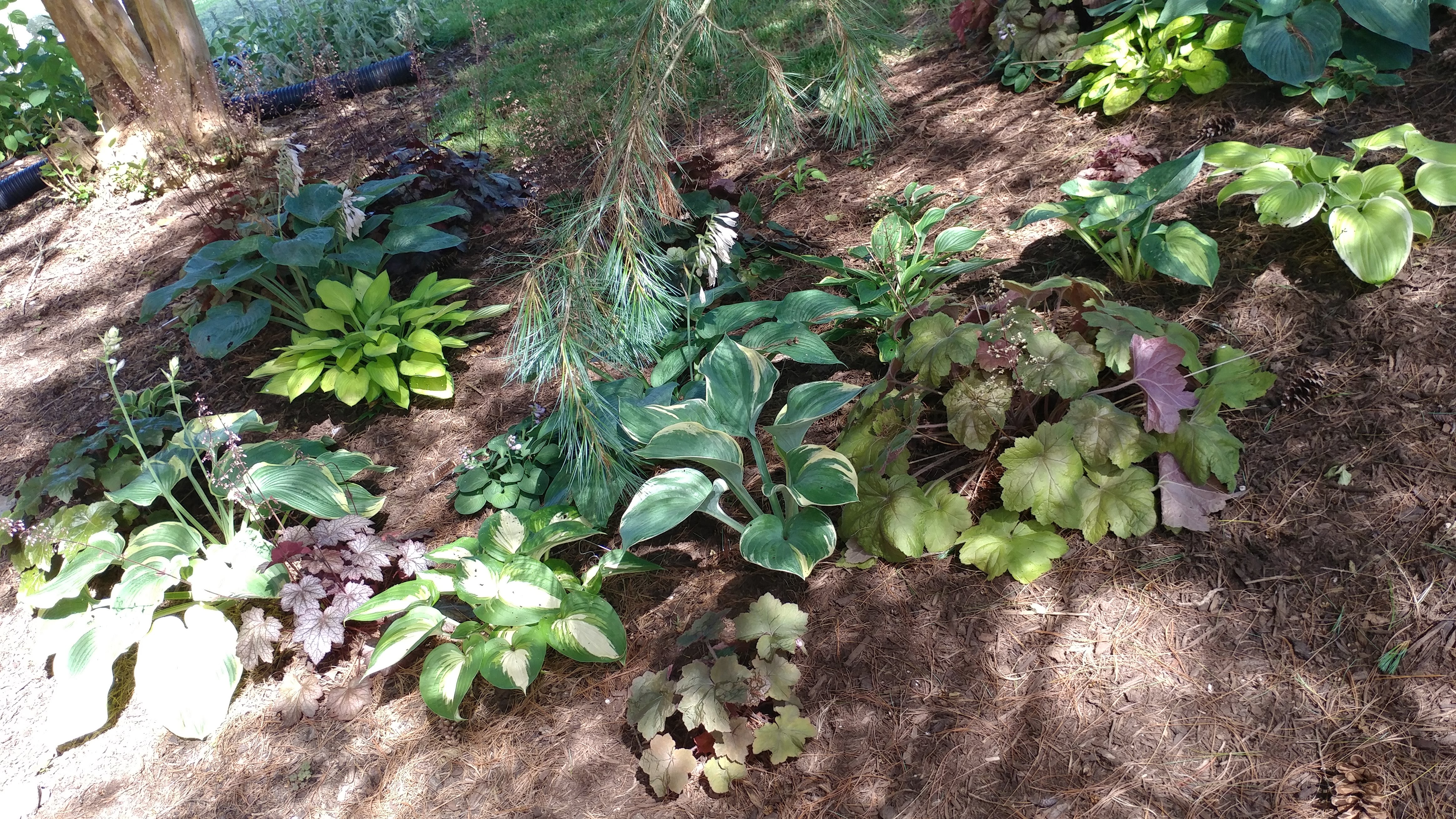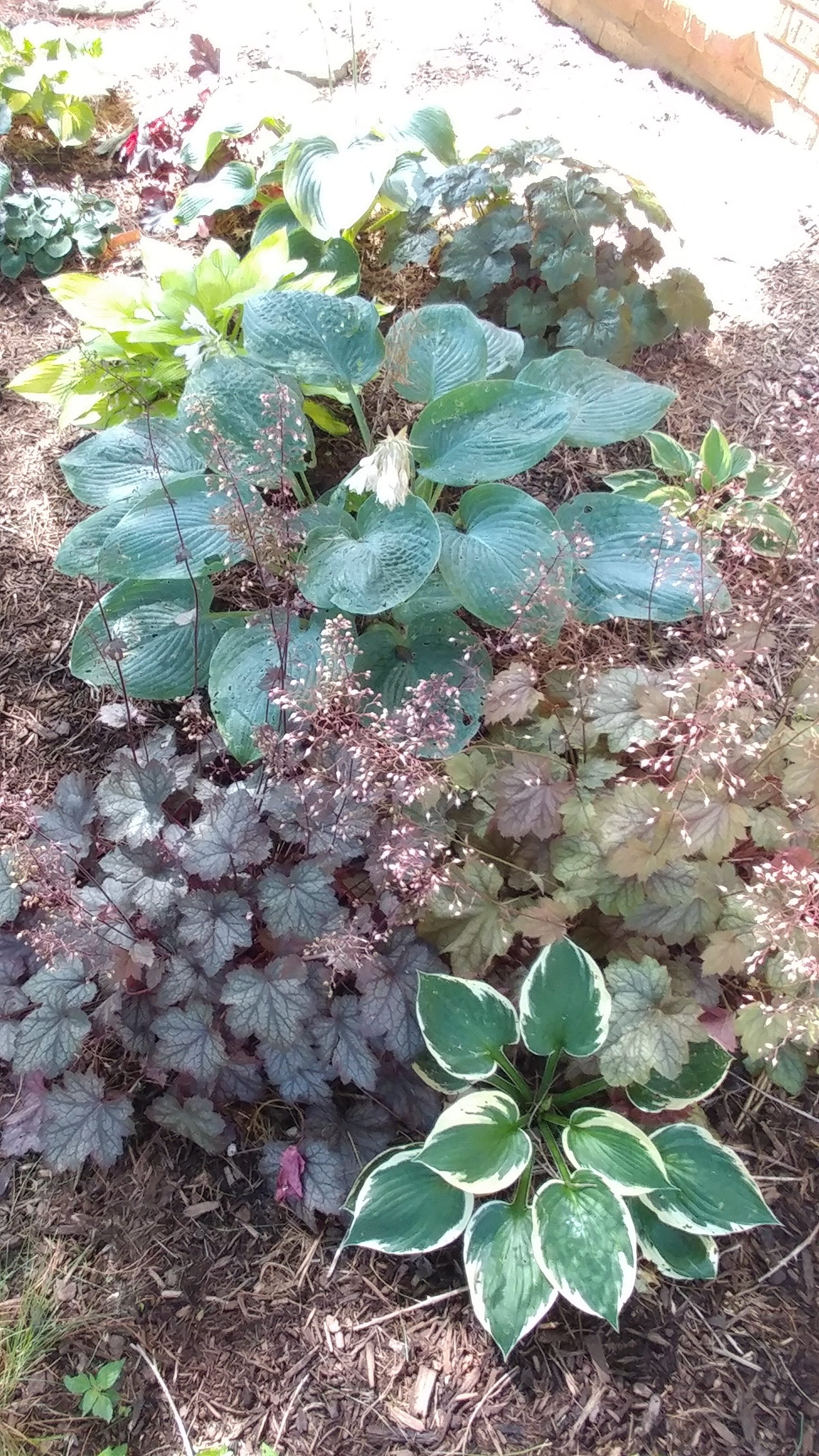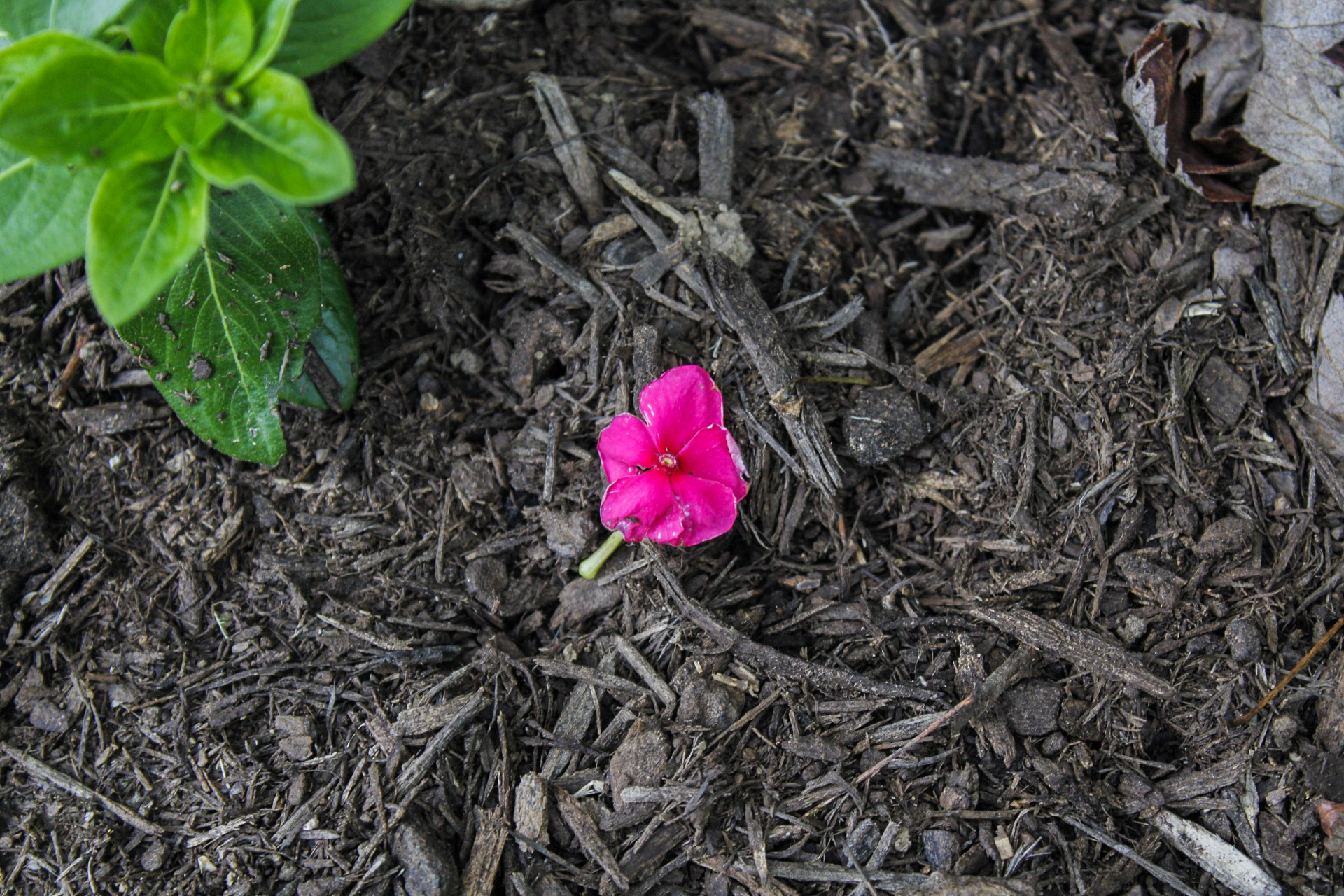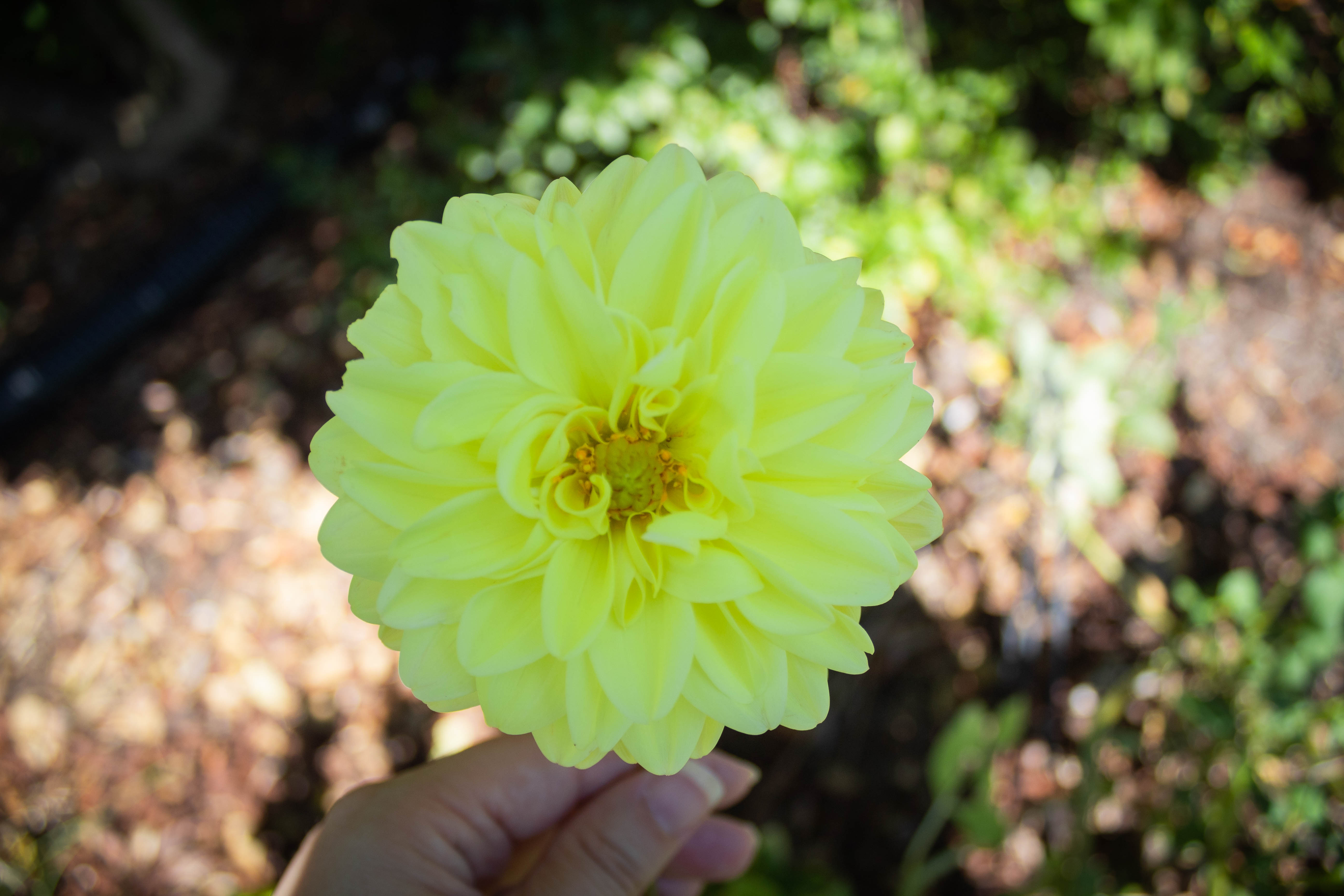“Begin with the end in mind” is a favorite phrase in education circles. Think about where you want students to be at the end of the year, semester, nine weeks, unit, or lesson, and then plan accordingly. In other words, make your unit test first, and then plan your lessons such that students learn the material they need to known for the test. Sounds sensible, right?
I wish I could say that I always followed this in my classes because the result when I don’t is usually some last minute scrambling to try and cover everything. Or, I have to change the assessment to fit what I have taught, which can be a problem if it doesn’t cover everything described in the standards. Similarly, in gardening, we need to begin with the end in mind. Otherwise, we end up with plants that quickly outgrow their allotted space, and we are constantly battling to make them fit. When we don’t account for where/how plants will end up in maturity, we end up with some interesting looking landscape maintenance.
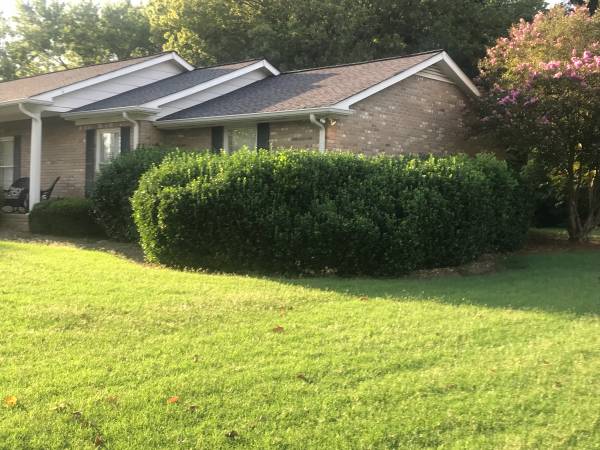
One of the most important aspects of planning a landscape is to look at the tag for the plant. It will tell you the height and width of a plant in maturity. It will also suggest ideal spacing between plants to account for this. I see so many people space their plants for the size that they currently are, rather than the size that they will be. Then, when the plants inevitably grow to the size that the tag says they will, homeowners either hack away at the plant to try and make it fit, or they tear it out and start over again. This could have been avoided if they instead chose to begin with the end in mind.

Planning for hosta and coral bell shade garden (2 years ago) – looks very sparse but will grow to fit the space 
Hostas and coral bells after growing to mature size – filled in nicely!
A few common plants that people use in landscapes but fail to account for size in maturity are boxwoods, laurels, yews, euonymus, and crape myrtles.
Boxwoods, laurels, yews, and euonymus can get pretty large, but are rather small when you first buy them. Boxwoods get to at least 5 feet tall and laurels can get anywhere from 8 to 12 feet tall depending on the variety! So, when I see people planting planting laurels in front of low first floor windows, I just shake my head. Because, unless their intention is to have the window completely covered by the bush, they are going to be struggling to prune that bush low enough every single year. They are fighting a losing battle. Eventually, they will just rip them out, wasting money and time in the process.
Even the much-loved azaleas are victims to slaughtering due to improper planning. Read my favorite garden blogger’s take on what you have to do if you plant azaleas that are too large for the space and what you can do to prevent it from happening (hint…it’s begin with the end in mind).
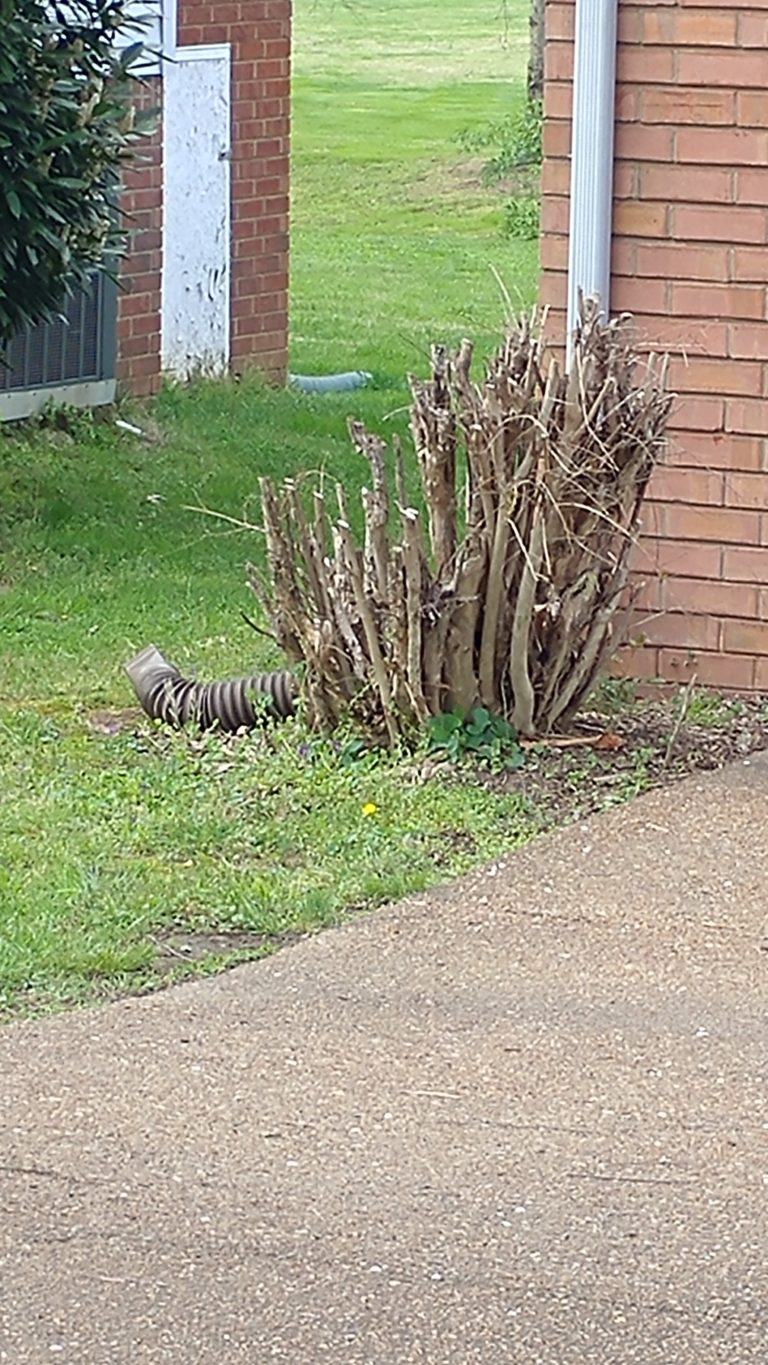
Now, about crape myrtles. Say this with me, “CRAPE MYRTLES ARE TREES.” A good rule of thumb for determining how far away from the house to plant trees is that you should plant the tree at a distance of at least half the tree’s MAXIMUM height (not current height). Trees can cause issues with foundations; their branches can damage roofs; and they will not have the proper room to grow if you plant them too close to the house.
So, how do you avoid these problems? Save money and buy younger versions of plants, but space them according to tags, and be patient as they grow. Or, buy larger, more mature (and more expensive) shrubs to begin with. Alternatively, buy dwarf versions of plants that don’t get very large in maturity (but still look at tags because even dwarf varieties GROW LARGER than their original size).
